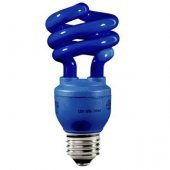Search the Community
Showing results for tags 'products'.
-
I have made a custom post type for products, and am using a custom taxonomy for the product categories. The thing that I am wondering about is that sometimes a product category is a parent, and sometimes a child, but sometimes both. For instance, if you have a top level category named shoes, then you might have a sub category named Nike. However, Nike also has shirts, so you could say that shoes and shirts were both subcategories of Nike. Do you know what I'm saying? It's like there is no real parent to child relationship, but they are both parents and both children of each other. How do you handle this type of situation?
-
For the past few years, I have been designing a database & web site for a client in quite a mediocre style IMO. The site design is something that can always be changed, modified, and more or less completely overhauled. My question is in the database design. Since I am by no means an expert Database Administrator, I have been approaching my clients site with a very novice approach. One table per product type. Every product type has several similar attributes like colorname, stylename, price, etcetera... Yet every product type also has way more distinct attributes, like thickness, edge profiles, cleaning methods, installation methods, etcetera. I have googled around and came across something called the EAV Model. When I first saw it I was stricken with awe.. and thought to myself that THIS was the answer to all of my problems............ a few google searches later, I hear nothing but horrible things about this model when it comes to SEO.. or in-site searches in general. It is supposedly a nightmare of a "Normal Form" to use for something whose rows will be populated exponentially. 40 new products one day, 22 the next, 100 another day... and so on. So my question, which I almost feel deserves to be in Application Design... is What is the ideal method of normalization for a database that contains several product types which have both similar and dissimilar attributes? Obviously a table for every product type is ridiculous and inefficient, because the owner constantly has a new attribute he wants to add causing me to have to hack and tweak and duct tape it into the system. I really need some advice if I want to do this for a living or be able to claim that I know what I am doing when it comes to e-commerce website development. Luckily, I convinced the client to go with Authorize.net so I do not have to create a shopping cart, but that is another story completely.

